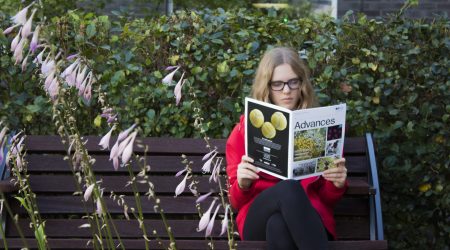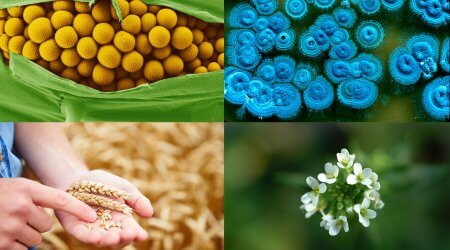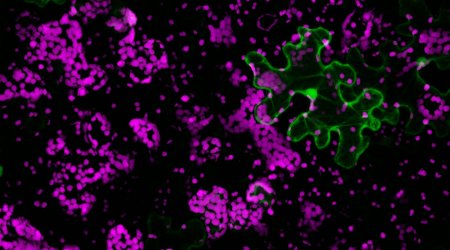Brassica species encompass a diverse range of economically important crops worth in excess of $20 billion worldwide
Brassica research at the John Innes Centre is thriving, in no small part due to the close links with the teams studying vernalisation, the need for some plants to undergo a period of cold weather before they can flower.
Research by John Innes Centre scientists using broccoli and the reference plant Arabidopsis thaliana demonstrated that differences in broccoli genotypes that required longer or shorter periods of cold prior to flowering could be mapped back to small variations in a gene called FLOWERING LOCUS C (FLC).
Earlier research by Professor Dame Caroline Dean showed that variation of the FLC gene enables Arabidopsis (a wild relative of brassica crops and in the same family) to adapt to different climates. Working with Dr Judith Irwin, the team has now shown that these principles also apply to broccoli.
The developments are part of a wider project at the John Innes Centre funded by the Biotechnology and Biological Sciences Research Council (BBSRC) to increase crop productivity and reduce the vulnerability of our food supply chain to fluctuations in climate. Working with Professor Dean, Dr Irwin’s lab translates understanding in the reference plant Arabidopsis into more strategically relevant, and genetically more complex, brassica crops.
This spring the team announced the development of a new line of fast-growing sprouting broccoli that effectively removes the requirement for vernalisation. The new line, developed using conventional breeding techniques, takes just 8-10 weeks to go from seed to flower (the part of the broccoli we eat is the flower buds) and has the potential to deliver two full crops a season in-field.
Even more promising, Dr Irwin believes that the new line can be grown year-round in protected conditions.
– Dr Judith Irwin
“There are lots of things to consider in terms of the economics of farming in protected conditions, but you could grow them in a greenhouse, vertical farm or even a poly tunnel.”
Grown under such protected conditions, the new line would allow growers to set themselves up locally, close to centres of distribution, reducing food miles at a time when the UK’s reliance on imported vegetables is particularly acute, with just 23% of our fruit and vegetables grown at home.
The Brassica Genus
The Brassica genus contains a range of diverse and economically important species, including: Brassica oleracea of which broccoli, cauliflower, cabbages, Brussels sprouts, kohlrabi and kale are all subspecies, and Brassica rapa which includes pak choi and Chinese cabbage, and which is also grown as an oil crop in countries such as Bangladesh.
Another example, Brassica napus, familiar to all as the yellow fields of oilseed rape, is an allotetraploid hybrid of B. oleracea and B. rapa (containing the genetic information from both parental species) making it even more genetically complex.
BRAVO! A pipeline from lab to field
Another exciting collaboration involving John Innes Centre scientists, breeders and growers, Brassica Rapeseed And Vegetable Optimisation (BBSRC BRAVO) is a five-year partnership programme that offers a joined-up response to the challenge of climate change.
Led by Professor Lars Østergaard, BRAVO provides a means of applying fundamental science by bringing together stakeholders from all sectors to create a pipeline from lab to field. It includes representatives from six academic partners along with the breeding industry, the National Farmers Union (NFU) and AgriTech East.
“We consulted with farmers, growers and plant breeders to find out what is important to them. They will be exposed to the science all the way through the five-year programme to help take it forward,” said Professor Østergaard. High on the breeder wish list are synchronised flowering, better seedling vigour and establishment, less pod shatter and higher yields. Some of the outcomes may be years away: applying knowledge from the model plant Arabidopsis and transferring it to more genetically complicated brassicas when looking for traits is not straight-forward.
Another longer-term ambition is the possibility of combining genetics and gene expression data with environmental data to create more sophisticated agronomic models that take a holistic view of crop production.
BRAVO Project Manager, Dr Rachel Wells, said, “It would be great to be able to plug in where your field is in the country and say, ‘This is my latitude, my longitude, this is the variety I’m going to use, it has this type of genetics in it, this is when it’s going to flower based on our weather forecasts.’” Dr Wells added, “The more strategic work you do… the more it drives you in that direction. It is nice to know that what you are doing is going to go on and have an impact in the real world.”







